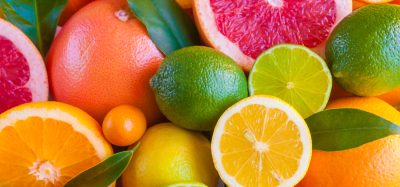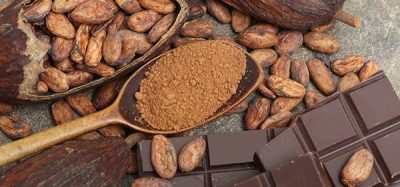Nestlé confectionery Journey with colours
- Like
- Digg
- Del
- Tumblr
- VKontakte
- Buffer
- Love This
- Odnoklassniki
- Meneame
- Blogger
- Amazon
- Yahoo Mail
- Gmail
- AOL
- Newsvine
- HackerNews
- Evernote
- MySpace
- Mail.ru
- Viadeo
- Line
- Comments
- Yummly
- SMS
- Viber
- Telegram
- Subscribe
- Skype
- Facebook Messenger
- Kakao
- LiveJournal
- Yammer
- Edgar
- Fintel
- Mix
- Instapaper
- Copy Link
Posted: 15 December 2010 | Steve Tolliday, Principal Product Technologist, Nestlé Product and Technology Centre | No comments yet
Colour in food is important. It is one of the drivers for the consumer in selecting specific foods and when combined with flavour and texture, adds to the overall enjoyment of the consumption of food. Historically, confectionery has been full of bright, exciting colours to ensure its appeal to the young and the young at heart. Confectionery needs to be fun, exciting, bright and cheerful to fulfil the consumers’ expectations; poor colour equals a dull product in both senses of the word.
Many of our Nestlé products have colour as one of their key attributes. Products such as Smarties, Rowntrees, Allens, Jojo and Wonka have created a consumer expectation for these brands which have colour at their heart.
Colour in food is important. It is one of the drivers for the consumer in selecting specific foods and when combined with flavour and texture, adds to the overall enjoyment of the consumption of food. Historically, confectionery has been full of bright, exciting colours to ensure its appeal to the young and the young at heart. Confectionery needs to be fun, exciting, bright and cheerful to fulfil the consumers’ expectations; poor colour equals a dull product in both senses of the word. Many of our Nestlé products have colour as one of their key attributes. Products such as Smarties, Rowntrees, Allens, Jojo and Wonka have created a consumer expectation for these brands which have colour at their heart.
Colour in food is important. It is one of the drivers for the consumer in selecting specific foods and when combined with flavour and texture, adds to the overall enjoyment of the consumption of food. Historically, confectionery has been full of bright, exciting colours to ensure its appeal to the young and the young at heart. Confectionery needs to be fun, exciting, bright and cheerful to fulfil the consumers’ expectations; poor colour equals a dull product in both senses of the word.
Many of our Nestlé products have colour as one of their key attributes. Products such as Smarties, Rowntrees, Allens, Jojo and Wonka have created a consumer expectation for these brands which have colour at their heart.
The removal of artificial colours
The use of artificial colours in confectionery, particularly children’s confectionery, has been under intense scrutiny for many years now.
For Nestlé’s strategic confectionery brands and in particular those products targeted at children, we began the development to remove artificial colours several years ago. This was driven by the Nestlé Nutrition Health and Wellness (NHW) Strategy.
Following a number of press articles and other media concerns as well as internal Nestlé research, we published internal guidelines for confectionery markets to follow. These basically stated that for reasons of consumer acceptance / public perception and to safeguard the image of existing products intended for children, the recommendation was that all of our global markets should develop an action plan with a clear timeline to remove artificial colours.
Time to complete these changes will depend on a number of issues, such as the consumer preference for non-artificial colours in the individual markets, as well as the technical and regulatory limitations of non-artificial colours within the manufacturing processes and the achievement of a consistency across product groups/brands.
It is essential that any changes made to the products should respect local regulations and maintain consumer preference as well as continue to ensure the existing quality and safety standards of the products. Furthermore, it has to be accepted that the removal of artificial colours from existing products will range from straightforward replacements to more complicated changes in processing methods within our factories. Also from a commercial viewpoint, an understanding that exact matches of existing colours are not always possible and that costs and volumes of colours may very well increase.
As an example of this corporate vision to move towards a better Nutrition Health and Wellness platform, the children’s confectionery product Smarties was one of the first brands to undergo this transition from an artificial colour range to a non-artificial colour range. The brand has recently gone even further in Europe by the removal of other ingredients including all ‘E’ numbers. This continues the work of moving towards a better Nutrition Health and Wellness platform and creating a fun colourful product whilst achieving consumer requests for clean label products that they feel comfortable both in consuming themselves and as donor purchasers.
The Southampton colours
As you will be aware, in July 2008, the EU Parliament discussed a legislative package that would require an on-pack warning stating “may have an adverse effect on activity and attention of children” for products containing the colours identified within the Southampton University report.
The investigation and publication by the team from Southampton University in September 2007 was named ‘Food additives and hyperactive behaviour in 3-year-old and 8/9-year-old children in the community: a randomised, double-blinded, placebocontrolled trial’. This report has had much publicity in the media and has led to an increase in the profile of artificial colours for consumers. It has also directly led to the required on-pack warning.
The specific identified colours are listed below:
» Tartrazine INS102
» Quinoline Yellow INS104
» Sunset Yellow INS110
» Carmoisine INS122
» Ponceau 4R INS124
» Allura Red INS129
This legislation came into force for the whole of the EU in July 2009 and any products still containing these colours should now carry the on-pack warning statements.
For markets outside of the EU, the position is not as clear. Some markets such as the Oceania region tend to follow the EU legislative lead but there are currently no known plans for them to take a similar position on the Southampton colours. In the Far East, countries such as Japan, Singapore and Malaysia have strong local legislation on colours, for South America, CODEX is the main point of reference FOOD COLOURING and for North America, both the US and Canada have specific legislation for colours.
There is some general agreement from the worldwide regulatory bodies and within the industry as to what constitutes an artificial colour.
The following colours are considered to be ‘artificial’ by Food Safety legislation in all the major markets. This includes FDA (Food and Drug Association – USA), FSA (Food Standards Association – UK), European Food Safety regulations and Australia/New Zealand Food Standards Association, in addition Malaysia, Japan and South Africa contain most, if not all, these colours in their artificial colour lists:
» INS102 Tartrazine (FD&C Yellow No 5)
» INS110 Sunset Yellow (FD&C Yellow No 6)
» INS123 Amaranth (Red No 5)
» INS122 Carmoisine
» INS129 Allura Red (FD&C No 40)
» INS124 Ponceau 4R
» INS104 Quinoline Yellow
» Fast Green FCF
» INS133 Brilliant Blue (FD&C Blue No1)
» INS127 Erythosine (FD&C Red No3)
» INS132 Indigo Carmine (FC&C Blue No2)
Outside of the above listed artificial colours, there are then several categories of colours which, within most countries, legislations are not actually specified. They are however generally accepted as classifications within the colour industry but not necessarily understood by the consumer.
Alternatives to artificial colours
There are colours that are variously described as non-artificial, nature identical or in some cases natural; there is also the use of colouring foodstuffs, which are foods in their own right that impart colour onto the final product.
All of these colours are plainly not artificial / synthetic but they cannot always be described as natural due to either the processes they have undergone, in that they may have been chemically altered in some way or, in the case of nature identical, they have actually been produced synthetically but have a chemical structure identical to that found in nature.
Care must be taken when describing these colours, for instance, E160a Beta Carotene can be found in two forms, one is classed as ‘nature identical’ and there is also a ‘natural’ Beta Carotene. The natural version is usually sourced from Blakeslea trispora. These differences in source and manufacture can cause much debate and deliberation.
There is little international agreement on the status of these non-artificial colours. As an example, INS141 Chlorophyll is widely used within the EU and is variously claimed as non-artificial or even natural in many products. However, in the US, it cannot be used in food at all. A similar position was taken by Canada until very recently when the Canadian Food Authority accepted the use of INS141 in a limited number of foods. Similar problems surround colours such as Blue Gardenia, commonly found in Asian products but not authorised for use outside of this region.
There are many such anomalies and lack of agreement between the global markets and this obviously has a knock-on effect when trying to develop colours for Nestlé global brands such as Smarties. All Smarties now carry the flash on-pack ‘No Artificial Colours’, yet because of the varying regulations, each manufacturing factory uses a different permutation of colours to meet local requirements.
Colouring foodstuffs
As previously mentioned, Smarties in the EU have been Nestlé’s flag bearer in both the removal of artificial colours and the drive towards clean label. Several years ago, development began on being able to produce stable, attractive, intense colours for Smarties using colouring foodstuffs. This development work was carried out by the Hamburg factory with support from the Nestlé Product and Technology Centre in York.
These food colourings use fruits and vegetables as their source material and undergo no chemical processing. Under EU ingredient legislation, they are not classed as additives, but foods in their own right or, as they are more commonly known, colouring foodstuffs.
The colouring foodstuffs for Smarties consist of combinations of the following:
» Spirulina
» Safflower
» Black Carrot
» Radish
» Hibiscus
» Lemon
» Red Cabbage
A number of supermarkets own-brand products and numerous other competitors have also begun to use colouring foodstuffs in their products. Tesco, Asda and Marks & Spencer all have confectionery products, and indeed other foods using colouring foodstuffs on their shelves. This is very much consumer driven and is really being led by the UK and Germany and the other EU states in general. However, there are now mainstream products appearing in other markets such as Oceania, Malaysia etc.
Not all regulatory bodies recognise the use of colouring foodstuffs, usually because their regulations are too restrictive and they interpret any food used to colour another food as a colour, even though this would not normally be its first function. In the present climate of trying to remove artificial colours, some of these international bodies may need to reconsider their regulations, otherwise they are removing the possibility of alternative colours ever been used.
The blue and green challenge
One area of intense debate for all markets is finding alternatives to INS133 Brilliant Blue. This artificial colour has been a stalwart for confectionery for many years. It is extremely versatile and is very stable in terms of heat, light and pH. Although not included in the Southampton study and therefore not one of the colours that requires a warning statement in Europe, it is nonetheless very much an artificial colour and one that has had several negative media reports regarding hyperactivity in children.
The range of alternatives for artificial blue colours is very limited and there are only a few acceptable commercial solutions. Again, there is no agreement between international markets on authorised alternative blue colours. Anthocyanins (INS163) are globally recognised, however for confectionery they have limited applications due to their pH instability in an acidic environment: which is great for reds and pinks, but not so stable at the blue end of the spectrum.
From a technical viewpoint, the following commercially blue options work in some confectionery products:
» INS163 Anthocyanin
» Blue Spirulina
» Blue Gardenia
» Jagua Fruit
However, it is recognised that these blues will not be suitable for every application and as already mentioned, regulatory restrictions play a major part in deciding which is the right blue to use.
Anthocyanins come in many forms and from many different sources, most are laked for stability, some are not, and most appear on authorised colour lists.
Much has been discussed about Blue Spirulina within the EU. Nestlé supports its classification as a colouring foodstuff and it is a useful alternative to INS133 Brilliant Blue, in terms of its stability, especially for panned products.
Gardenia has limited global use. It is mainly restricted to Asia but from a technical perspective, it is a very effective alternative to INS133.
Recently, the use of the Jagua fruit as a blue alternative has been made public through a patent application in the US. The effectiveness and acceptance of this new blue is awaited with some anticipation.
Summary
Nestlé will continue with our global commitment to remove artificial colours from our products. This will be across all our divisions, including confectionery. The rate of change will be governed by a number of factors including regulatory, technical and consumer driven preference but all overridden by the basic policy of making our products ‘better for you’. There are continuing challenges, not least of which is the US market and the global search for viable alternative blues and greens which satisfy both regulatory and consumer demands. We will continue to inform the consumer so they have the tools to make informed choices about the products they buy and it is they who will ultimately decide whether our products are the ones they want to consume.
About the Author
Steve Tolliday
Steve joined the company in 1978 and had several years experience working in production with brands such as Smarties, Fruit gums and Polo before moving onto factory project based work. In 2002, Steve joined the Nestlé Product and Technology centre located in York. The role includes responsibility for a number of global sugar confectionery brands such as Smarties, Rowntree, Wonka, Allens and Bon Pari. Technical assistance, primarily in the area of colours, is also provided to our global sugar based factories ranging from the EU and US to South Africa and Australia.







